
Content really does rule the world. It’s no longer a question of how content fits into a marketing plan – content IS the marketing plan.
And today, the most successful content strategies are omnichannel. They’re the ones that create a seamless journey for the customer across all channels and touchpoints, on- and offline.
In this article, you’ll find advice and ideas that will kick off your content strategy journey. These are the key principles to remember when researching and writing a content strategy.
Some principles and ideas will be more useful to you than others – and that’s great. As a strategist, you’re the captain driving the direction. It’s your responsibility to take a problem and find a course of action. And every strategy is unique. What you find here will lay the groundwork for your own creativity.
What is an omnichannel content strategy?
Omnichannel content marketing is simply making sure your messaging, visuals and tone of voice are consistent across all the channels of communication you’re using.
An omnichannel content strategy ensures you reach customers where they are with relevant messaging and keeps them within your content ecosystem.
In a world where we’re more connected than ever, consistent customer experience is fundamental. Globally, digital consumers are now spending an average of 2 hours and 24 minutes per day on social networks and messaging apps.
Social media platforms, email and your website are all essential touchpoints, but so are face-to-face interactions with customers. In-store experiences, presentations and sales meetings – and even the decks you present – all play an important role in the purchase journey. Because of this, everything needs to be telling the same brand story.
A good content strategy understands where the customers are and finds a way to be present and relevant in that space. So, it’s important to consider how each touchpoint provides some kind of value for customers, whether that’s usefulness, education or entertainment.
An omnichannel content strategy example: Nike
Nike is one of the best examples of a brand that creates a consistent message using customer-centric omnichannel content. This content promotes the benefits of its products, rather than the features.
The emphasis is on building community rather than pushing out brand-focused messaging. This helps to reinforce Nike’s core message that no matter what body you have, you can continue to do what you love. And you’ll experience this message across all of Nike’s channels and platforms.
Here are a few examples from the Nike content ecosystem that show how coherent and cohesive its omnichannel content strategy is.
Nike email marketing
In email content, the focus is on the local community – based on where customers live. The emails encourage readers to take part in offline events, and they highlight inspirational people who are building communities themselves.
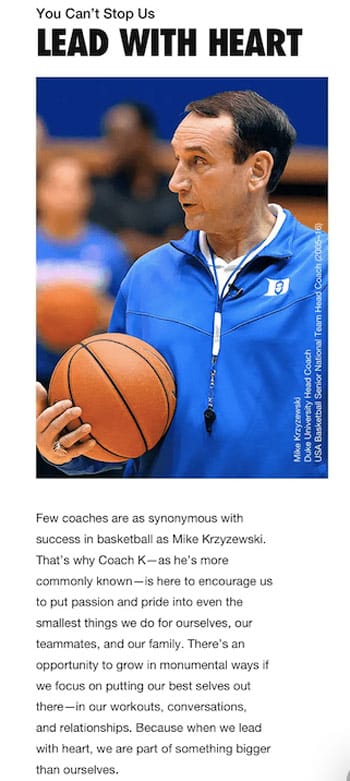
Open description and transcript of image
Nike email.
Headings:
You Can’t Stop Us
LEAD WITH HEART
Photo: male basketball coach in sportswear holding basketball, probably mid-game. Text overlaid up the right-hand edge reads:
Mike Krzyzewski
Duke University Head Coach
USA Basketball Senior National Team Head Coach (2006–16)
Body text:
Few coaches are as synonymous with success in basketball as Mike Krzyzewski. That’s why Coach K – as he’s more commonly known – is here to encourage us to put passion and pride into even the smallest things we do for ourselves, our teammates, and our family. There’s an opportunity to grow in monumental ways if we focus on putting our best selves out there – in our workouts, conversations, and relationships. Because when we lead with heart, we are part of something bigger than ourselves.
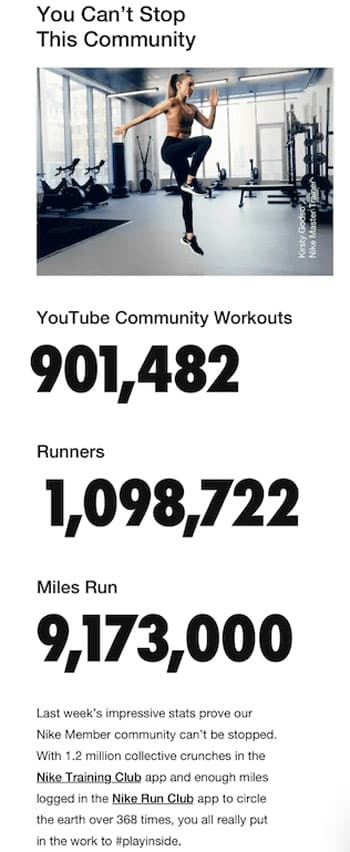
Open description and transcript of image
Nike email.
You Can’t Stop This Community
Photo: woman wearing workout outfit performs standing single leg jump in gym with workout equipment. Text overlaid up the right-hand edge reads:
Kirsty Godso
Nike Master Trainer
YouTube Community Workouts
901,482
Runners
1,098,722
Miles Run
9,173,000
Body text:
Last week’s impressive stats prove our Nike Member community can’t be stopped. With 1.2 million collective crunches in the [link starts] Nike Training Club [link ends] app and enough miles logged in the [link starts] Nike Run Club [link ends] app to circle the Earth over 368 times, you all really put in the work to #playinside.
Example snippets from Nike’s marketing emails
Nike Instagram
Nike’s Instagram bio says ‘Spotlighting athlete stories’. Here, there are no models, there are real people and real stories. These further develop the inclusive and purpose-driven ethos that runs through all the customer touchpoints.
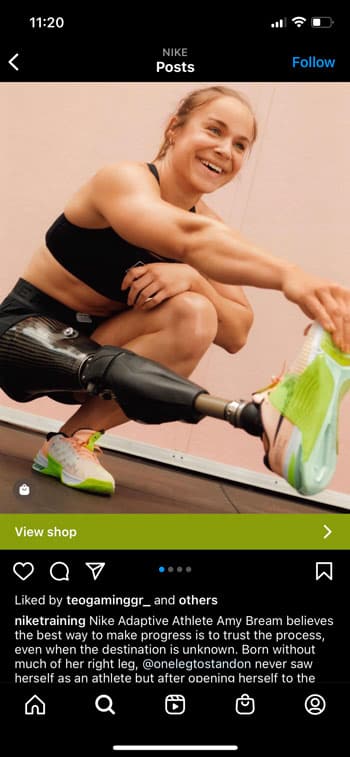
Example from one of Nike’s Instagram posts
Open description and transcript of image
@niketraining Instagram post.
Photo: Adaptive athlete Amy Bream, wearing workout crop top, shorts and trainers, smiles as she crouches on her biological leg while holding onto her outstretched prosthetic leg with one hand.
Call to action below the photo says ‘View shop >’
The visible text of the post reads:
Nike Adaptive Athlete Amy Bream believes the best way to make progress is to trust the process, even when the destination is unknown. Born without much of her right leg, @onelegtostandon never saw herself as an athlete but after opening herself to the […]’
Nike stores
The omnichannel experience as a Nike fan doesn’t stop online. Flagship stores like London’s Nike Town on Oxford Street are a Mecca for celebrating individuality and different athletic abilities. There are customisation stations, fitness classes, click & collect for online purchases, and even exclusive events where you can meet your favourite athletes.

Photo inside NikeTown on London’s Oxford Street. Image source: https://www.oxfordstreet.co.uk/shop/nike/
Open description of image
Large store space with spotlighting and wooden floors. There are Nike sportswear displays in the background and three stations consisting of display cases of trainers and large Mac screen in the foreground. Each station has a stool.
Nike manages to stay true to its brand purpose while also showing up on the platforms where its customers are. The brand keeps the audience’s needs in mind but is always aligned with its own core values, which means it always stays relevant.
Defining the strategy challenge
It can feel like a monumental challenge to create a content marketing strategy. But that’s OK.
Be curious, ask questions
In the early stages of creating your strategy, your definition of the problem is going to be more important than your definition of the answer. It’s where you have to start.
To define the problem effectively, you need to unknot a lot of complexity. So the first thing to do is to ask a lot of questions.
Strategy isn’t about having all the answers. Strategy is about knowing to ask the questions to get to the answers.
As strategists, questions help us work out what the challenge is to be solved. Questions help us see what the single most important thing to do or say is with the content strategy. And questions help us write the brief for the execution of the strategy.
Getting started with omnichannel content strategy
The first thing to know about any kind of strategy design is that it’s always a big knotty mess in the beginning.
You have a complex problem that needs solving, such as ‘How do I reach and engage my potential customers so I can make more sales?’ And you need to turn the problem statement into actionable tasks to achieve the overall goal.
It can be an overwhelming prospect. Especially if there are many channels to include.
But there’s always chaos in the process. And this thought always gives me comfort at the start.
It’s how we get from a big knotty mess to solving the problem that counts. Just know: the knot will get untangled. And it’s fun to try!
The second thing to know about strategy is that less is more. Strategy should be simple. A finished content strategy should be so simple that a child could understand it. It’s vital that everyone within a business should be able to understand, buy into and communicate what the business’s strategy is. So you want to remove any blocks to this that you can.
An overcomplicated content strategy that’s difficult to talk about and difficult to understand is much less likely to succeed. This is because no one will be truly aligned on the goals and the actions needed to achieve them.
Here’s a really simple format to use to capture what your strategy is:
GET [audience and problem]
TO [action you require]
BY [your strategy here].
Another omnichannel strategy example: McDonald’s
Here’s an example of this super-simple format in action, from a very successful McDonald’s campaign:
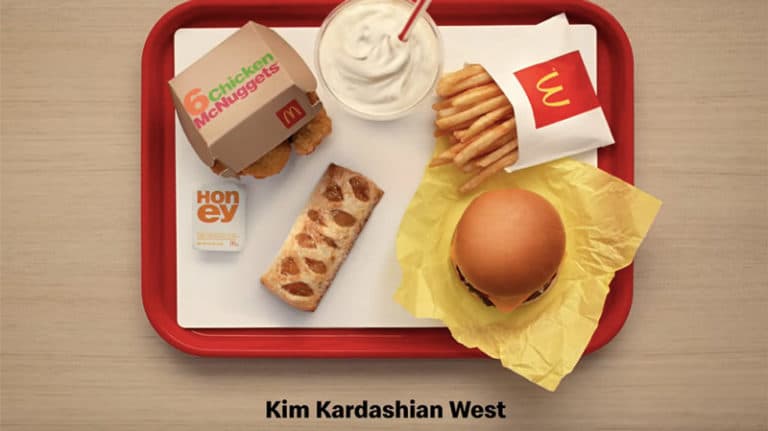
Image source: AdWeek
GET a new, younger audience
TO buy and visit more often
BY telling tiny stories of McDonald’s fandom.
The content strategy
McDonald’s needed to attract new, younger customers to the brand and increase frequency of purchase. Around 86% of all adults visit McDonald’s once a year. So to drive real sales growth, McDonald’s needed to get customers to come more often.
So, their Superbowl 2020 campaign strategy was to tell tiny stories of McDonald’s fandom to attract a younger audience while driving sales and frequency.
Everyone has a relationship with McDonald’s. Every person has a McDonald’s order. And your order says something about you.
So McDonald’s asked for (or imagined) the go-to orders of some of their most iconic (sometimes fictional) customers. Suddenly we had insight into the trays of Kim and Kanye, Millie Bobby Brown and Whoopi Goldberg – as well as the Hamburglar, the Big Bad Wolf and Julius Caesar.
To support the campaign film, McDonald’s collaborated with many young, famous music icons. Big names like US rapper Travis Scott and K-Pop band BTS created their own meals that customers could buy and experience, encouraging uptake in a younger audience.
Each meal had its own special-edition packaging and tray, so fans could collect them, photograph them, and upload them to social media – which spread the campaign even further. Some customers even created clothing from the packaging. A truly omnichannel approach to a content campaign.
Creating the ‘kernel’ of a strategy
One of the best ways to get started with any content strategy is by moving into a mindset that frees you from the complexity of the problem.
This can feel counterintuitive because the act of strategising is itself about designing a way to deal with complexity and challenge. But I promise that stepping back from the problem and oversimplifying in the beginning is helpful.
To get a simple idea of the problem, I use Richard Rumelt’s ‘kernel’ model from his excellent book Good Strategy/Bad Strategy. Rumelt’s model outlines the three elements you need to get to the ‘kernel’ of a good strategy:
- A diagnosis: an honest sense-check describing what the current situation is. This should cover where we are, where we want to be, and what’s stopping us from getting there.
- A guiding policy: a direction of travel, a simple overview of how we’ll get where we want to be.
- Coherent actions: a comprehensive, cohesive list of activities that will get us to where we want to be.
Here’s an example that uses this ‘kernel’ model, from a recent content strategy I designed for an airline-software client:
Diagnosis
Our technology and product is the best on the market, but our marketing is non-existent and potential customers don’t know we’re an innovative brand. So we want to show new, innovative airlines we have the solution they need.
Guiding policy
We need to excite our existing customers and entice new ones to ensure we make our revenue targets for 2023 and 2024.
Coherent actions
- Write a new proposition and positioning statement that demonstrates who we are, why we exist and what we offer.
- Create an exciting idea to inform a marketing campaign that will communicate our legacy as a digital-first, innovative business.
- Design content at all customer touchpoints to position us as the market leaders.
Useful content strategy models
As useful as the kernel model is, I don’t believe one strategy model holds all the answers. If you only use one model, you only get one set of answers.
There are many, many books out there full of models, theories and principles for designing the best strategy. But as I’ve mentioned, your strategy should be nothing if not simple. Ironically, simplicity can be difficult to achieve sometimes.
So I like to draw on a lot of different models to frame and reframe the problem and gain a range of insights. Doing this always helps me see the problem in a different way.
Here are three models I like to use when I’m analysing a problem: ‘The Six Ps’, ‘Now, Near, Far’ and ‘70/20/10’.
1. The Six Ps
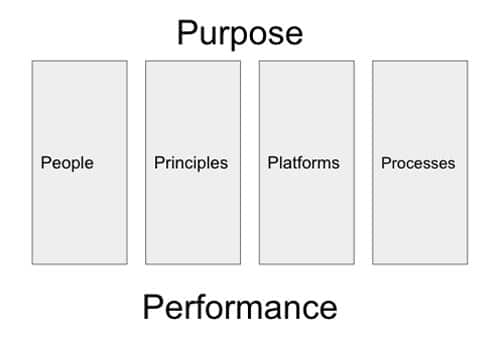
There are many things to consider when you’re creating a strategy.
The Six Ps is a model that captures the essential elements of a strong content marketing strategy. It forces you to consider how different things will be affected, the relationship between them and what you’ll need to do to create change in each area.
For example, you’ll need to understand what people your strategy will affect and how. This means both the audience and the team of people who will be doing the work to create and execute the content.
You’ll also need to understand existing processes and how they might change, as well as the way you’ll measure success.
The Six Ps are:
-
- Purpose: the reason your content (or indeed your business) exists. Purpose applies to every piece of content, not just specific campaigns. It should unite what matters to your customers and what matters to your brand. For example, IKEA’s vision is ‘to create a better everyday life for the many people’ and this translates into the sign-off they use: ‘The Wonderful Everyday’.
- People: the people involved and how they’ll be organised, and the time and skills the project needs. Design the roles you think you’ll need. This can include creatives (to create the visuals and write the words) and project management (to keep the content machine working and on time). You’ll want data leads (to feed insights in and help with evaluating success) and perhaps community managers (to spot issues and opportunities arising from the content).
- Principles: the fundamental values that your business and team adhere to in order to promote better planning, decision-making and ways of working at your business, and as a content team. For example, you might have principles like ‘Always seamless experience’, ‘Customer-first’, ‘Be ambitious’, or ‘Be useful’.
- Platforms: the channels you’re going to use to communicate your message. These are the places on- and offline where you’ll be publishing or distributing content in order to reach and engage your customers. For example, social media, email, website and any in-person locations.
- Processes: the systems and workflows required to create, publish and evaluate content. These need to be carefully designed to reduce friction while managing risk. Each sign-off and review adds to the cost of the content. Develop planning cycles that allow you to look far ahead but give creative and editorial teams the flexibility they need to respond to opportunities in the short term.
- Performance: the metrics, outcomes, and methods of evaluating the project in the short or long term. This is how you’ll show how well your content is performing.
Why this model helps create an omnichannel content strategy
The Six Ps is a great framework for gaining insight and getting an overview of all the things that will be affected by your strategy. It ensures you’re considering all possible touchpoints your customers have with you, so you can weave your purpose through each one.
2. The Now, Near, Far model
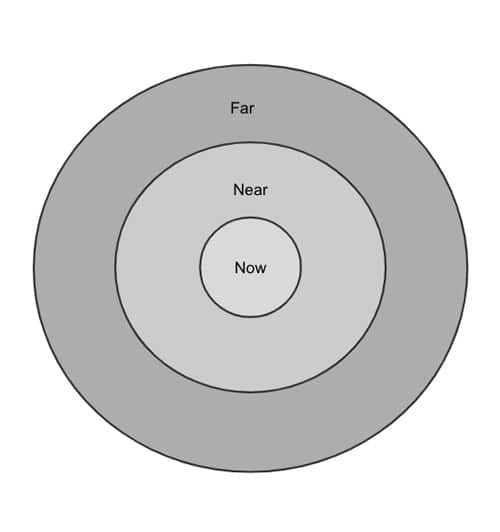
The Now, Near, Far model helps us to do the very important job of prioritising.
A good content strategy should work to achieve both long- and short-term goals. You have to be able to see what tasks to prioritise in the short term (Now), medium term (Near) and long term (Far). Then you can allocate adequate time, resources and budget to each.
This model works well when you can realistically only do one set of tasks now but you know you have a backlog of other activities to get through. It will help your focus to pile different tasks and activities into the three groups.
Now: What actions should we be doing now to move towards our goals? What are the quick wins?
Near: What do we know we need to do soon and therefore need to start planning for?
Far: What’s the long-term opportunity? What’s going to fill our backlog?
Why this model helps create an omnichannel content strategy
The Now, Near, Far model helps you to gain perspective and start to build your omnichannel content plan.
3. The 70/20/10 model
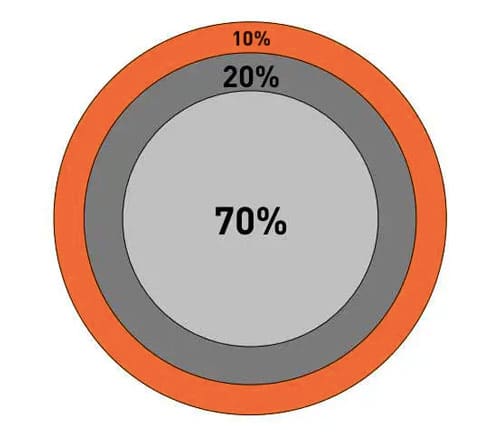
Image source: Business Insider
The 70/20/10 model is a bit like the Now, Near, Far model because at its core it helps with prioritisation. But it’s also about experimentation and making sure your business is allocating budget to being innovative with your content strategy. The risk otherwise is doing the same old thing over and over and ultimately becoming irrelevant to the audience.
The model can be used to plan whatever time frame makes sense for your business. In using it, you’ll be grouping types of content and allocating certain percentages of your overall content budget to each group.
Here’s how it works:
70% should go on low-risk, ‘evergreen’ content. This is your ‘business-as-usual’ content: the stuff you’re certain your audience wants, likes and engages with. This could be things like how-to blog posts, newsletters, educational content – even memes, if that fits your brand. This is where the majority of time, effort and budget should go.
The type of content your audience likes can change (especially in a digital context), so it’s important to embed reporting into your process. That’ll give you a feedback loop, so you can spot emerging trends and changes in online content and culture.
20% on new, innovative ideas. The model suggests you save around 20% of your budget for trying new things and seeing how the audience responds. This is where you should be spotting emerging trends and experimenting with if and how your brand can respond and take part.
10% on high-risk, high-reward ideas. The smallest amount of budget should be spent on making sure you can be agile and reactive to current events. It can also go towards wild-card ideas that arise during your specified time period. The idea is that if you don’t invest in content experimentation, you might miss opportunities to engage people and gain new customers.
Why this model helps create an omnichannel content strategy
The 70/20/10 model encourages you to stay agile and innovative and creates space for fresh content ideas. It will help you look at which channels are most appropriate for your 70% business-as-usual content, and which can be used for your 10% high-risk, high-reward content.
Creating a content strategy presentation
After you’ve worked out the kernel of your strategy and have written your idea in the Get-To-Buy format, it’s a great idea to present your strategy to your team in order to get buy-in.
Present your strategy in whatever format feels right for you and your business.
But a universal rule is to keep it short and sweet to avoid losing people’s attention. Stick to a simple storytelling structure and try to keep it to around five slides or two to three pages. You can always include detail and workings out in an appendix.
(You can read more about presenting a social media strategy here, and the same advice will apply.)
How to collaborate for a successful omnichannel content strategy
For an omnichannel content strategy to succeed, collaboration is key.
If you’re going to create a seamless experience across all customer touchpoints, teams within the business need to work together to make it happen. This can be tricky if a business is organised in siloes or is particularly large. This is one reason why using the Six Ps framework is useful, because you can consider how to overcome this in advance.
One problem can be solved by many different strategies and ideas. The strategist is not the only person who can contribute to a successful strategy. Good ideas can come from anyone in the business.
There is nothing more dangerous than having only one idea on the table because you end up overprotecting it. Instead, brainstorm potential solutions then choose what you feel is best as a team. That way, you have options to consider later. And everyone will learn that, when it comes to content strategy, there are many ways to crack a nut.
Tips for effective collaboration across your company
Here are some ideas to get you started:
- In the early stages, hold creative brainstorms and invite people from across the business – not just the content team or people directly involved with the project. This ensures you’re getting ideas and perspectives from people who are free from the minutiae of the challenge.
- Invite people you don’t usually work with to get involved in the project. For example, developers, data and insights people and account handlers. Talking to people outside your usual team means you benefit from their different skills and knowledge, which can enhance your content strategy.
- As a team, align your goals before you begin the project. Make sure everyone’s pain points have been voiced and addressed. Ensuring you have a shared end goal will help you stay on track.
- Reframe any obstacles you have between teams as opportunities instead and create an option that meets all parties’ needs.
Turning a content strategy into a content plan
Once the strategy side of content planning is done, formalise the ideas into a plan ready for execution.
A successful content plan has to be a plan you actually use. It can be in any format or programme – what matters is that it’s accessible and the people using it are happy to collaborate there. So, this could mean a Google Sheet or Doc, an Asana or Trello board or any other content-planning tool that your company uses.
The idea of a content plan is to plot out what is going live when and to have an overview. This will help you make sure everything is cohesive and will communicate a consistent message across all channels.
Here are the things you’ll need to include in your content plan:
- The purpose: This can be as simple as including your overall content purpose across the top of the plan as a reminder. Or you may have a different specific purpose weekly, monthly or quarterly if you’re promoting certain themes in that block of time.
- Calendar: Note the dates and times content will go live.
- Platform: List the channel (eg the social network, email, web page) where the content will be published.
- Creative assets: This is the copy and media to include (eg photos, videos, gifs and messaging, including any links and hashtags).
Omnichannel strategy = good strategy
Ultimately, any good content strategy will be omnichannel because omnichannel content means expressing a consistent purpose and message for your customers – no matter what channel or touchpoint they’re engaging with.
I hope this article helps you start strategic omnichannel content planning with confidence. I’ll leave you with a summary of the most important things to remember when it comes to any strategic planning.
- It’s always difficult in the beginning. This fact is a comfort to me when I feel the full weight of complexity in the early stages. It will all become clearer eventually.
- Strategy should be simple. If it isn’t, don’t be scared to ask more questions. Curiosity is a superpower.
- If you only use ONE model, you only get ONE set of answers. Use a few different strategy models to see how they can help you frame the problem in different ways. If nothing else, they might give you a new perspective.
Happy strategising!
Main image credit: 3rdtimeluckystudio / Shutterstock
